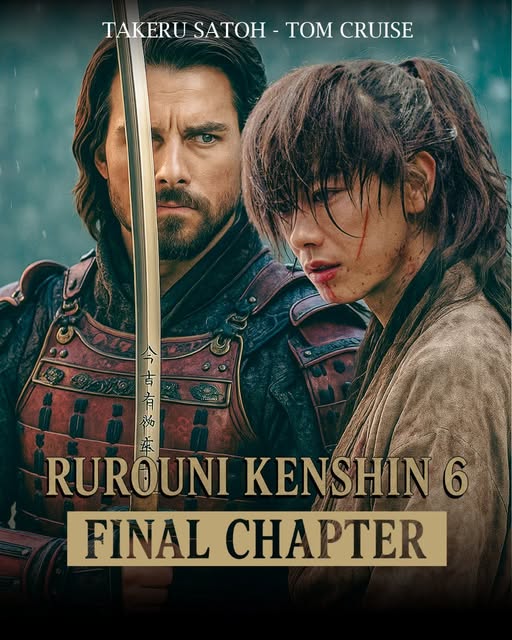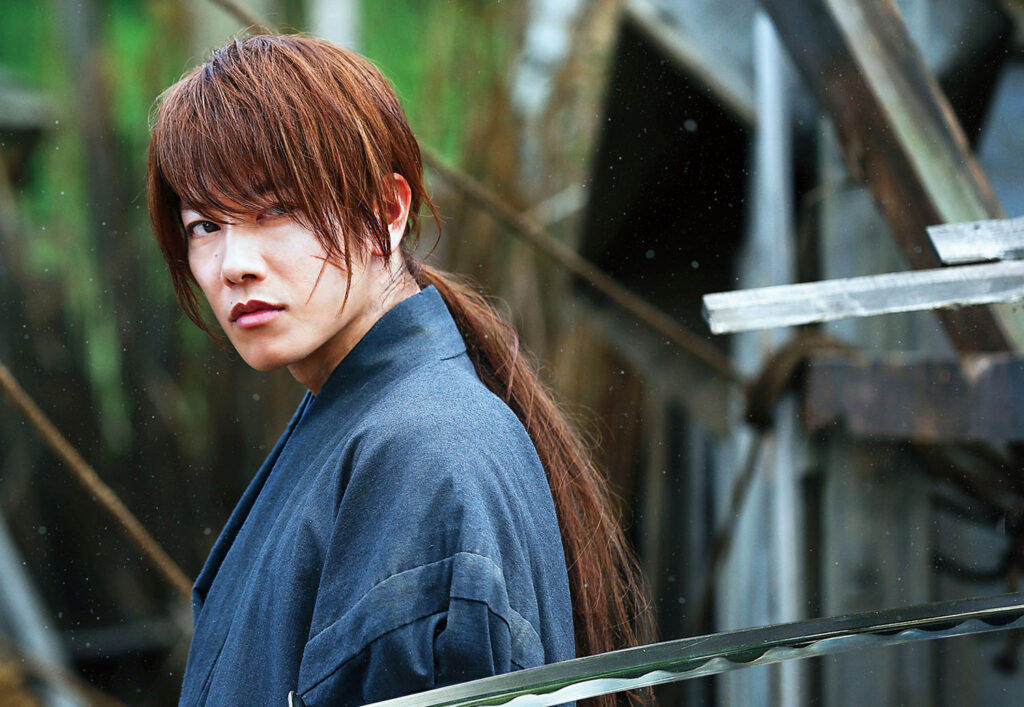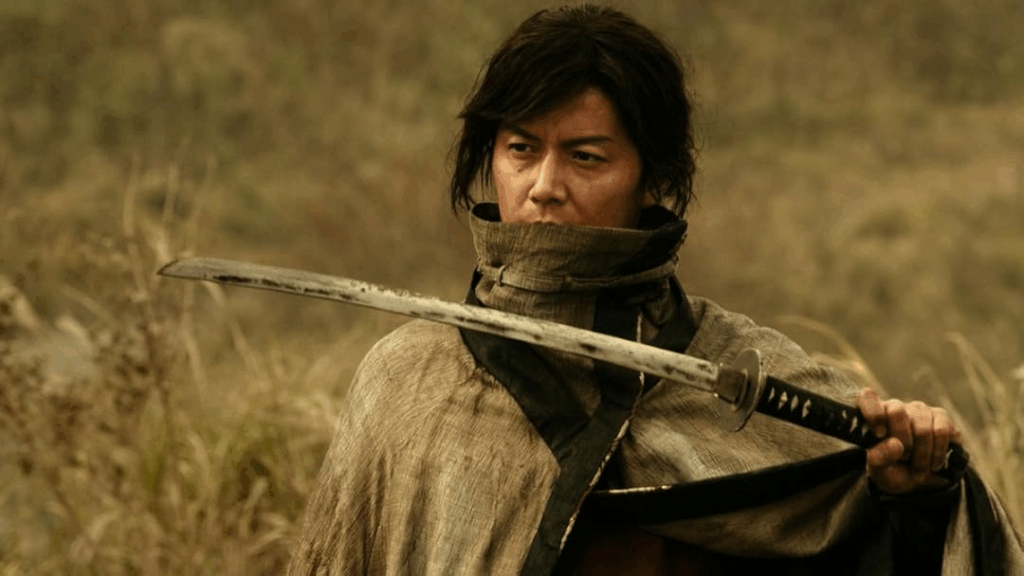Rurouni Kenshin: The Legend Ends

Introducing Rurouni Kenshin: The Legend Ends (2014) – A Thrilling Conclusion to the Kyoto Arc
Rurouni Kenshin: The Legend Ends (Japanese: るろうに剣心 伝説の最期編, Rurouni Kenshin: Densetsu no Saigo-hen) is the third installment in the live-action film series based on Nobuhiro Watsuki’s beloved manga Rurouni Kenshin. Directed by Keishi Ōtomo and released in Japan on September 13, 2014, this action-packed samurai epic serves as the direct sequel to Rurouni Kenshin: Kyoto Inferno (2014) and concludes the Kyoto Arc with breathtaking intensity. Following the cliffhanger of its predecessor, the film delivers a gripping finale centered on Himura Kenshin’s battle against the formidable Makoto Shishio, blending heart-pounding action, emotional depth, and historical drama.
Plot

Rurouni Kenshin: The Legend Ends picks up immediately after the dramatic events of Kyoto Inferno. Himura Kenshin (Takeru Satoh), a former assassin turned wandering swordsman, is reeling from his failure to rescue Kaoru Kamiya (Emi Takei), who has been taken hostage by the ruthless Makoto Shishio (Tatsuya Fujiwara). Shishio, a vengeful ex-samurai, sails toward Tokyo in his ironclad ship, the Rengoku, intent on overthrowing the Meiji government and plunging Japan into chaos. Declared a wanted outlaw by the government under Shishio’s manipulation, Kenshin faces immense pressure to stop the villain before it’s too late.
Washed ashore and near death, Kenshin is saved by his former master, Hiko Seijuro (Masaharu Fukuyama), a master of the Hiten Mitsurugi-ryū sword style. To defeat Shishio, Kenshin must learn the ultimate technique, Amakakeru Ryu no Hirameki, a move that requires not just skill but a profound understanding of his own values and purpose. As Kenshin trains, he confronts his past as the deadly Battōsai and grapples with his vow to never kill again. Meanwhile, Shishio’s forces, including the skilled Seta Sojiro (Ryūnosuke Kamiki) and the vengeful Aoshi Shinomori (Yusuke Iseya), tighten their grip, setting the stage for an explosive showdown.
The narrative weaves together Kenshin’s personal redemption, his relationships with allies like Sanosuke Sagara (Munetaka Aoki) and Kaoru, and a climactic four-on-one battle aboard the Rengoku. With Japan’s future at stake, Kenshin’s journey tests his resolve to protect without killing, culminating in a visually stunning and emotionally charged finale that resolves the Kyoto Arc while affirming his path as a pacifist.
Why You Should Be Excited

- Masterful Direction by Keishi Ōtomo: Ōtomo’s direction elevates The Legend Ends into a cinematic spectacle, balancing intense action with quiet, character-driven moments. His ability to adapt the intricate Kyoto Arc into two films (Kyoto Inferno and The Legend Ends) while preserving the manga’s essence has been widely praised. The final battle, which Ōtomo described as the most challenging to shoot due to the actors’ commitment to performing their own stunts, is a testament to his vision, delivering an “epic” sequence that rivals Hollywood blockbusters.
- Exceptional Cast and Performances: Takeru Satoh shines as Kenshin, capturing both his gentle demeanor and fierce resolve. Tatsuya Fujiwara’s chilling portrayal of Shishio makes him a terrifying antagonist, while Emi Takei’s Kaoru, though sidelined for parts of the film, remains the emotional core of Kenshin’s journey. Supporting performances by Yusuke Iseya (Aoshi), Munetaka Aoki (Sanosuke), and Ryūnosuke Kamiki (Sojiro) add depth, with Masaharu Fukuyama stealing scenes as the wise yet stern Hiko Seijuro.
- Breathtaking Action Choreography: Choreographed by Kenji Tanigaki, the film’s action sequences are a highlight, featuring inventive swordplay and acrobatics. The battles, particularly the forest duel with Aoshi and the climactic four-on-one fight against Shishio, are meticulously crafted, using slow-motion to enhance the fluidity and impact of each move. Fans of martial arts films will appreciate the creative, fantasy-style katana combat that remains grounded yet visually spectacular.
- Emotional and Philosophical Depth: Beyond the action, The Legend Ends explores Kenshin’s struggle with his violent past and his commitment to a non-lethal path. The film’s quieter moments, such as Kenshin’s training with Hiko and his reflections on life, add psychological weight, making it the most character-driven of the trilogy. Themes of redemption, sacrifice, and the cost of power resonate deeply, appealing to both fans of the manga and new viewers.
- Historical and Visual Authenticity: Set in the early Meiji era, the film incorporates historical details, from the Western-influenced Meiji police to the bustling streets of Tokyo. Filmed across locations like Ibaraki, Kyoto, and Tokyo with over 5,000 extras, the production creates an immersive world. The cinematography, combined with Naoki Satō’s stirring soundtrack and One Ok Rock’s emotional ending song “Heartache,” enhances the film’s epic scope.
Production and Reception

Filming for Rurouni Kenshin: The Legend Ends took place from July to December 2013 across multiple Japanese prefectures, ensuring authenticity in its depiction of the Meiji era. Released shortly after Kyoto Inferno, the film was a commercial success, praised for its action, performances, and faithful adaptation, though some manga purists noted deviations, such as the altered setting of the final battle from Mount Hiei to the Rengoku ship. The film premiered at festivals like the Brussels International Fantastic Film Festival and Fantasia Film Festival, earning accolades for restoring the samurai genre’s cinematic relevance. It was released on Blu-ray and DVD in Japan on January 21, 2015, and in North America by Funimation on January 3, 2017, with both subtitled and dubbed versions.
Critics lauded the film’s choreography and emotional payoff, with Lito B. Zulueta of the Philippine Daily Inquirer calling it a “spectacle to end all fight spectacles” that “restored the samurai genre.” Some noted the film’s 134-minute runtime felt slightly long, and Kaoru’s reduced role disappointed a few fans, but the consensus hailed it as a worthy conclusion to the Kyoto Arc.
Why It Stands Out
Rurouni Kenshin: The Legend Ends is a rare live-action anime adaptation that captures the spirit of its source material while standing on its own as a cinematic achievement. It balances high-octane action with introspective storytelling, making it accessible to newcomers while satisfying longtime fans. The film’s exploration of Kenshin’s moral dilemma—how to protect without killing—resonates universally, and its technical prowess, from choreography to production design, sets a benchmark for the genre.
Mark your calendars to experience Rurouni Kenshin: The Legend Ends on platforms like Netflix or Prime Video, where it’s available with subtitles or an English dub. Whether you’re a fan of samurai epics, martial arts, or character-driven dramas, this film delivers an unforgettable conclusion to one of cinema’s finest action trilogies. Join Kenshin as he wields his reverse-blade sword one last time to protect Japan’s future and find his path to redemption